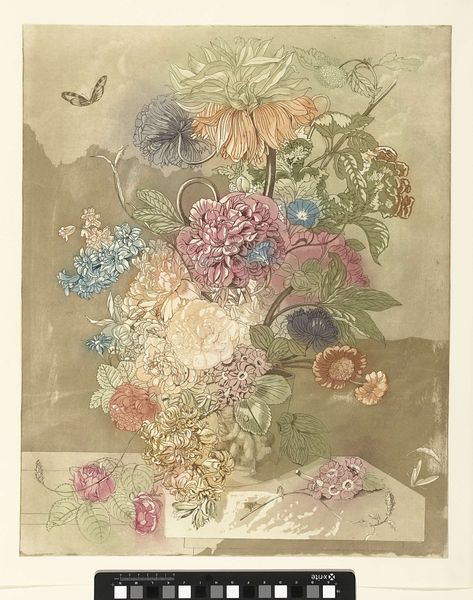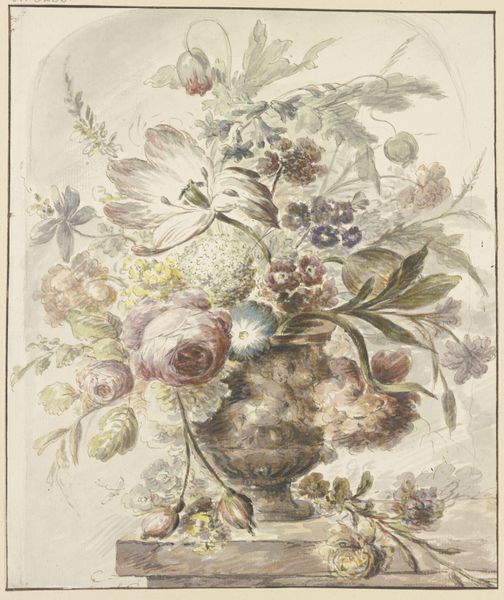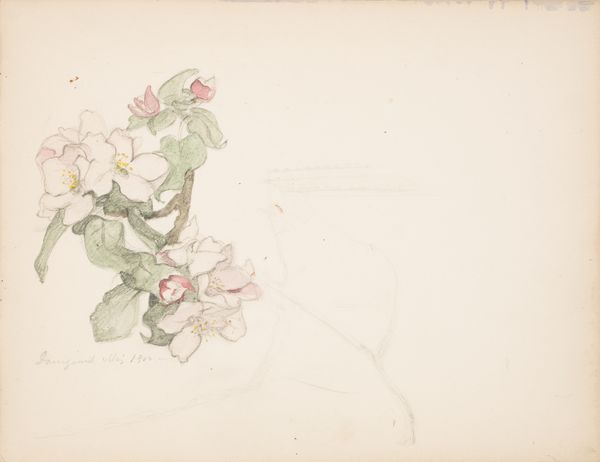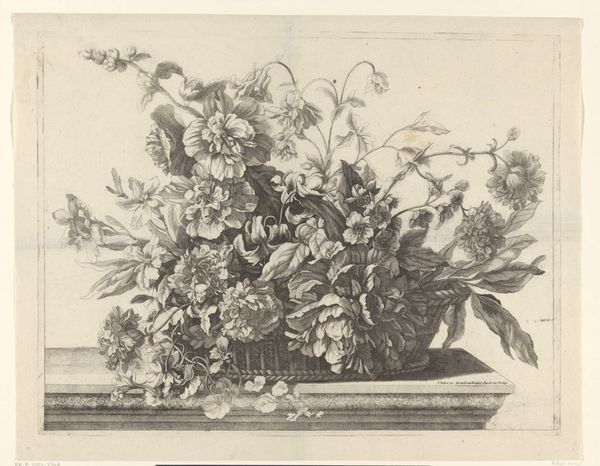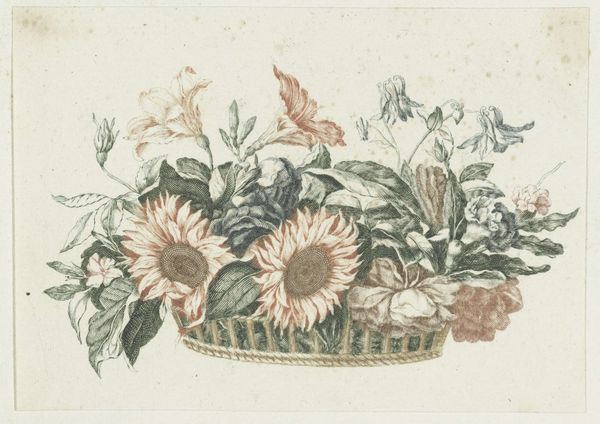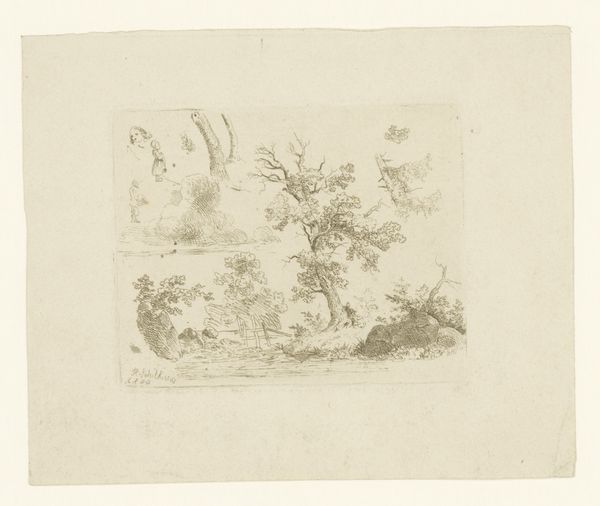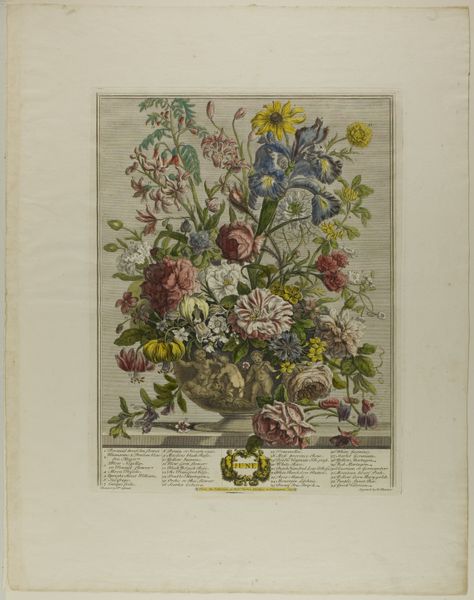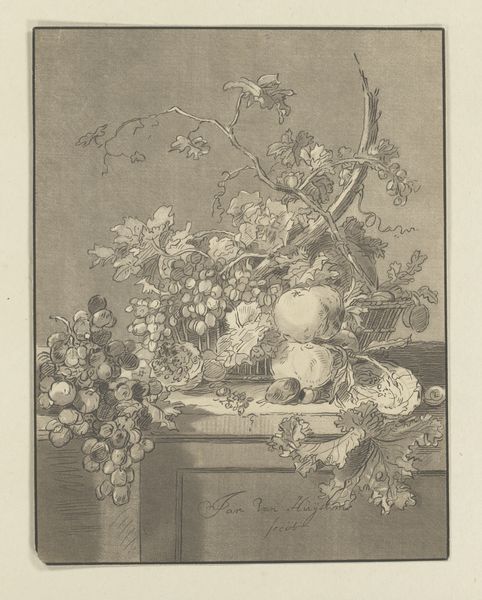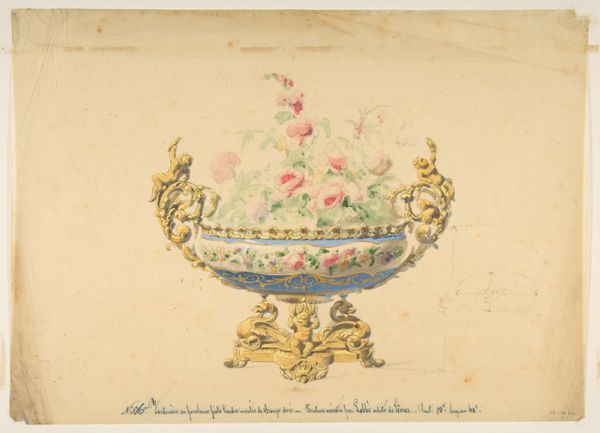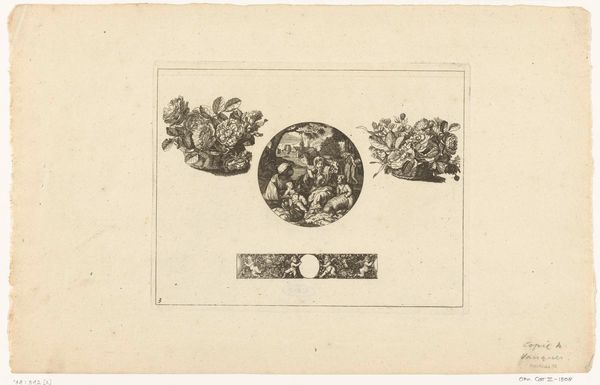
Ontwerp voor een plafondschildering met musicerende vrouwen en putti met bloemenmand als allegorie op Blijdschap 1715 - 1798
0:00
0:00
painting, watercolor
#
allegory
#
baroque
#
painting
#
landscape
#
figuration
#
watercolor
#
watercolor
#
rococo
Dimensions: height 377 mm, width 540 mm
Copyright: Rijks Museum: Open Domain
Editor: So, here we have a watercolor painting called "Ontwerp voor een plafondschildering met musicerende vrouwen en putti met bloemenmand als allegorie op Blijdschap," which roughly translates to "Design for a ceiling painting with music-making women and putti with flower basket as an allegory on Joy" by Dionys van Nijmegen, dating sometime between 1715 and 1798. It feels airy and delicate with its pastel palette and floating figures. What resonates with you most when you look at this piece? Curator: It whispers of rococo exuberance. Allegories were immensely popular then, providing a framework to explore abstract ideas through relatable human forms and symbols. Here, joy is not just presented, but amplified through the imagery of music and overflowing floral bounty held by the putti, creating a visual feast. Do you notice how the figures interact through gestures? Editor: I do. It’s like a choreographed dance. The women seem to be in harmony with each other, and the putti act as supporting characters, adding to the overall festive mood. Are there other symbols that stand out? Curator: Definitely. Consider the cloud they're perched on. Clouds in art often symbolize divinity, transcendence, or a connection to a higher realm. Placing these allegorical figures on clouds elevates the idea of joy to something divine, almost heavenly. Think about what music, flowers, and a soft colour palette meant in the 18th century – invoking a sense of refinement. It evokes a celebration not just of joy, but of idealized beauty and cultivated pleasures. How do you see the figures’ dynamic relating to ‘Blijdschap’? Editor: The symbolism provides a powerful feeling that Blijdschap isn’t a singular event but an orchestrated symphony of experiences. Curator: Precisely! And by understanding those visual cues, we glean so much more than the mere depiction; we perceive the cultural aspirations, the period's emotional nuances, and the human desire to give shape to abstract sentiments. Editor: I’ve gained a whole new appreciation for how symbolic language elevates a seemingly simple painting into a powerful representation of its era. Thank you!
Comments
No comments
Be the first to comment and join the conversation on the ultimate creative platform.

